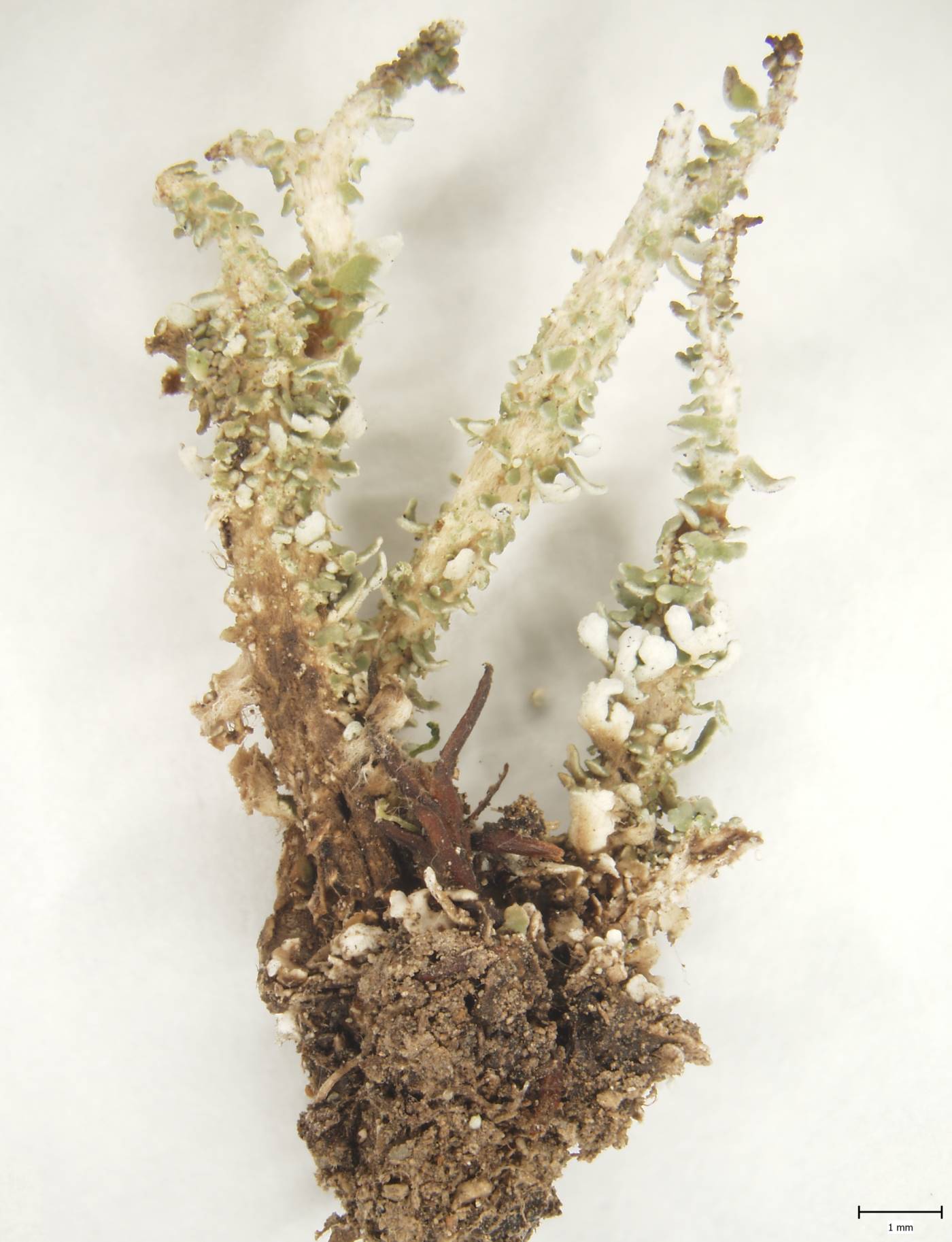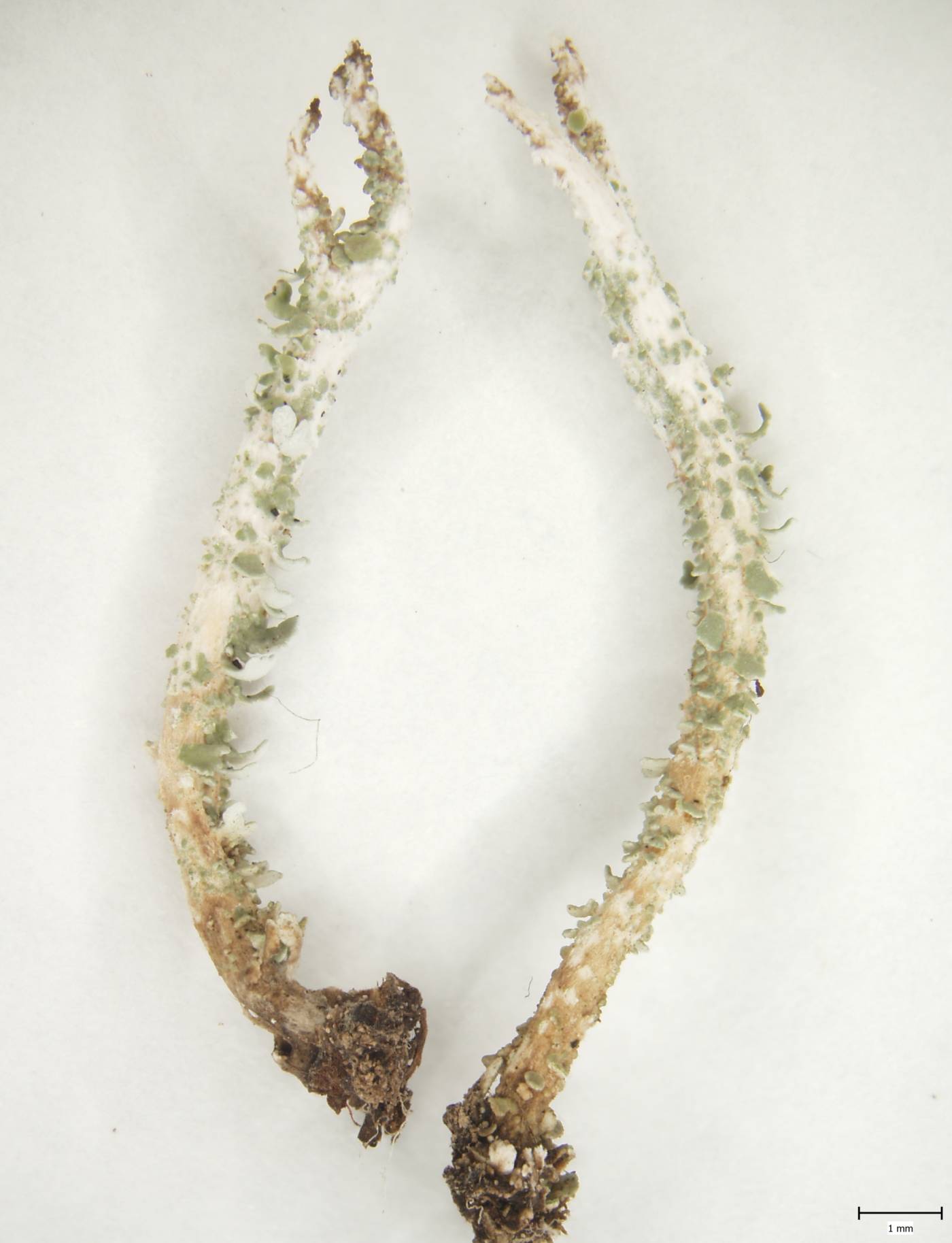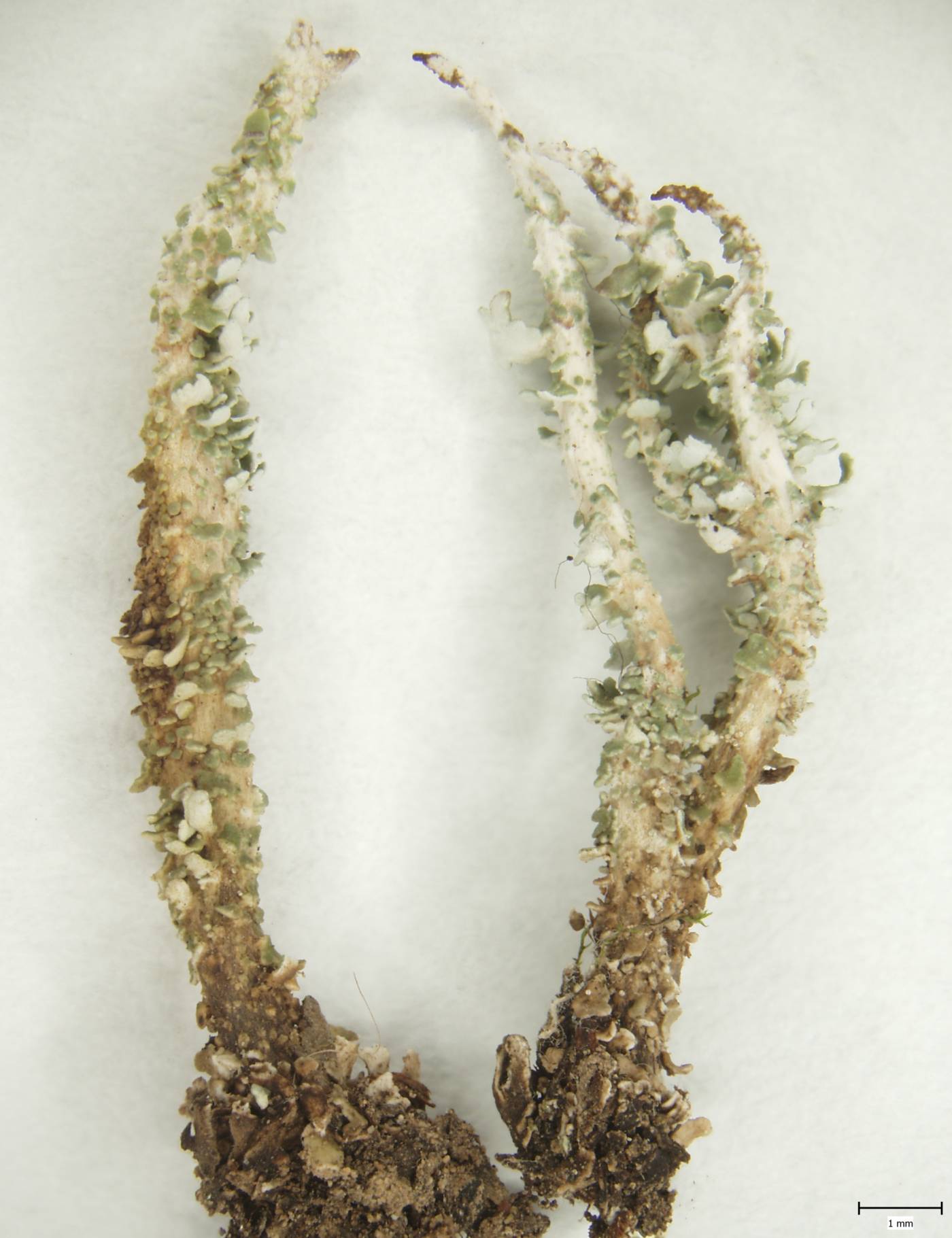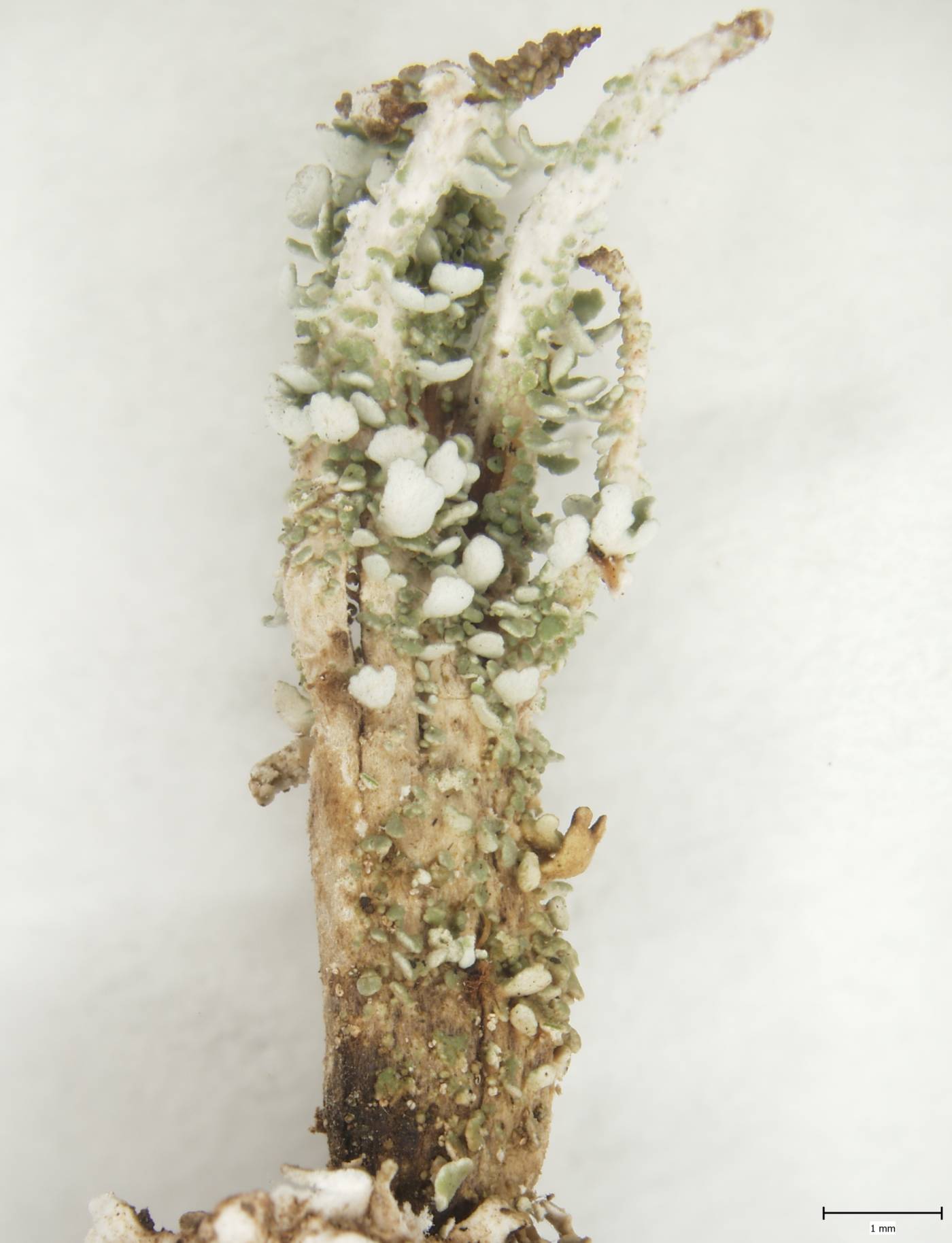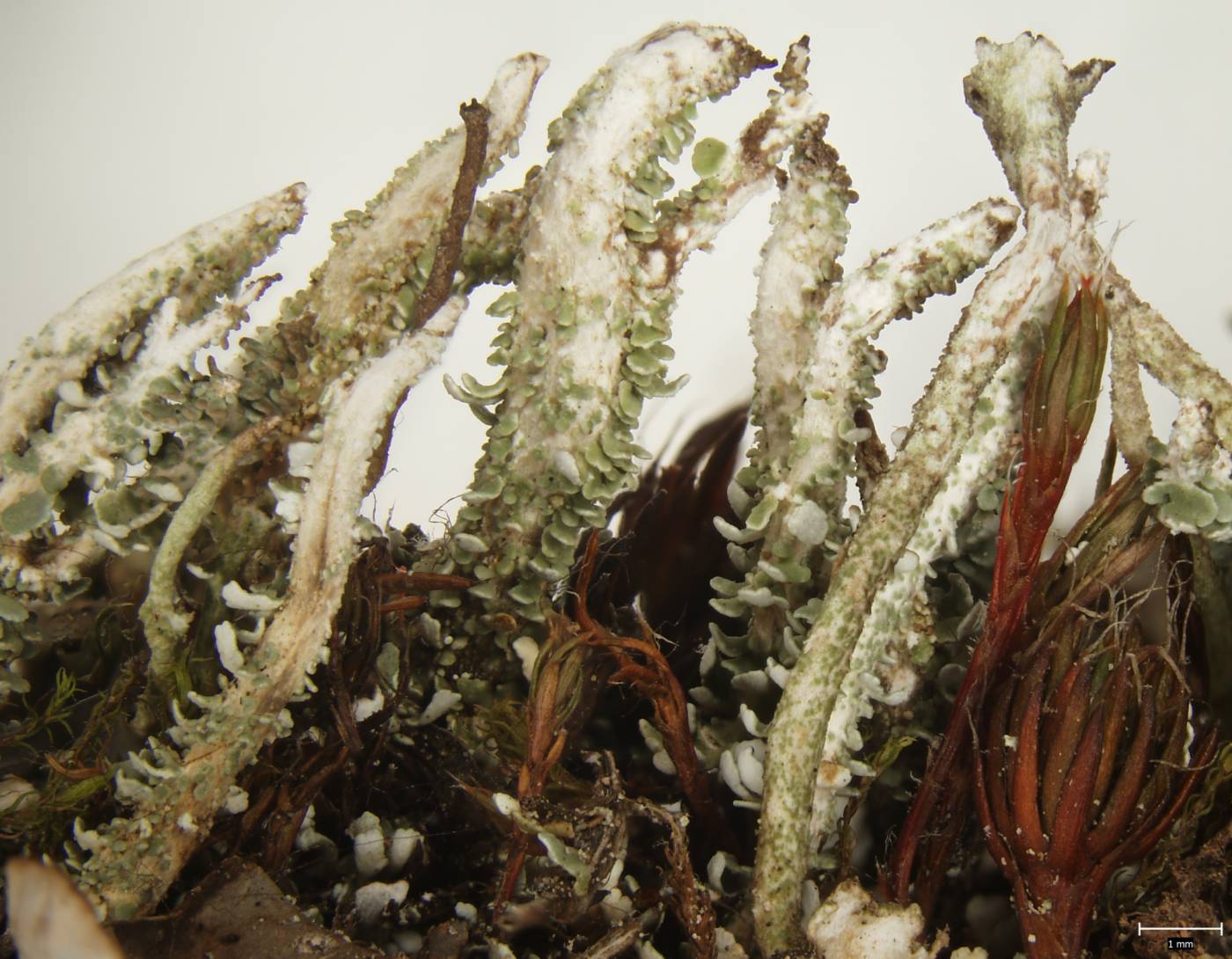Cladonia decorticata has usually unbranched pointy and thick-walled podetia covered with squamules and granules. From the slender forms of C. macrophylla, it differs in much smaller primary squamules and chemistry (contains perlatolic acid, UV+ white). The lichen is also distinguished chemically from its closest relative C. acuminata(Stenroos et al. 2019).
Cladonia decorticata prefers slightly acidic soil rich in minerals and open continental stands, such as heathlands, open relic pine forests and dry grasslands. It is rare and declining in Europe, mainly distributed in the central and northern parts (Ahti & Stenroos 2013), very rarely also in high mountain ranges of the Mediterranean (Burgaz et al. 2020). In the Czech Republic, it was frequently reported in the past (see the Vězda & Liška 1999 catalogue). However, the species is very rare nowadays. It has recently been collected at three localities: near Zvíkov in the Písek region, in the Třebíč region and Velká kotlina in the Hrubý Jeseník Mts.
Literature: Ahti T. & Stenroos S. (2013): Cladoniaceae. – In: Ahti T., Stenroos S. & Moberg R. [eds], Nordic Lichen Flora 5: 87–89. Stenroos S., Pino-Bodas R., Hyvönen J., Lumbsch H. T. & Ahti T. (2019): Phylogeny of the family Cladoniaceae (Lecanoromycetes, Ascomycota) based on sequences of multiple loci. – Cladistics 35: 351–384. Burgaz A. R., Ahti T. & Pino-Bodas R. (2020): Mediterranean Cladoniaceae. – Sociedad Española de Liquenología (SEL), Madrid.
taxonomic classification:Ascomycota → Lecanoromycetes → Lecanorales → Cladoniaceae → Cladonia
Red List (Liška & Palice 2010):CR – critically endangered
Red List (Malíček 2023):C1 – critically endangered
Occurrence in the Czech Republic
All records: 18, confirmed 11. One click on a selected square displays particular record(s), including their source(s).
